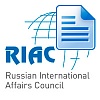Russia and the United States now have almost exactly the same number of strategic delivery weapons (847 and 848, respectively)
In
Login if you are already registered
(no votes) |
(0 votes) |
Day Figure
Author: Dmitry Stefanovich, RIAC expert.
The negative trend in U.S.–Russia relations is gradually moving towards the nuclear level, although both countries continue to abide by the provisions of the START III agreement.
According to the data provided by the U.S. Department of State, as of September 1, 2016, Russia has deployed 508 intercontinental ballistic missile (ICBMs), submarine launched ballistic missiles and heavy bombardment aircraft (the total number of deployed and non-deployed ICBM, submarine launched ballistic missile and heavy bombardment aircraft launchers is 847), as well as 1796 warheads for the deployed ICBMs, submarine launched ballistic missiles and heavy bombardment aircraft.
To compare, the United States has 681 (848) and 1367, respectively. These figures show that Russia continues to reduce the number of deployed and non-deployed strategic delivery weapons (although it has not hit the low of September 2013, when Russia declared 473 strategic delivery weapons), while the number of deployed warheads has increased.
The obvious reason for this is that ICBMs with multiple independently targeted re-entry vehicles (MIRVs) are being used instead of reclaimed single-warhead missiles.
In general, it should be noted that Russia and the United States now have almost exactly the same number of strategic delivery weapons, although there is a significant (and multidirectional) gap between the number of deployed strategic delivery weapons and warheads that Russia has in relation to the agreed limits (700 and 1550, respectively).

Data:
(no votes) |
(0 votes) |




